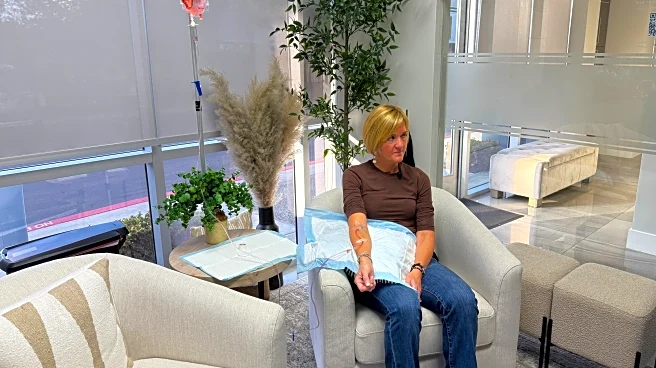What's Happening?
The Food and Drug Administration (FDA) has announced the addition of a boxed warning to Sarepta Therapeutics' gene therapy, Elevidys, following two patient deaths. This therapy, designed for Duchenne's
muscular dystrophy, will now alert users to the risk of potentially fatal liver failure. The FDA's decision comes after scrutiny due to the deaths of two teenage boys, leading to a temporary halt in drug shipments. The therapy is now restricted to patients aged four and older who can still walk, with new guidelines recommending weekly liver function monitoring for the first three months of treatment. Despite these challenges, Sarepta's stock rose by 7.7% following the announcement.
Why It's Important?
The FDA's decision to impose a boxed warning on Elevidys highlights the critical balance between innovation in gene therapy and patient safety. Duchenne's muscular dystrophy is a severe condition affecting young males, and Elevidys represents a significant advancement in treatment options. However, the associated risks underscore the importance of rigorous safety protocols. The restriction to ambulatory patients may limit access for those with advanced disease, impacting families seeking treatment. Sarepta's stock increase suggests investor confidence in the company's ability to navigate regulatory challenges, but the layoffs of 500 employees indicate ongoing financial pressures.
What's Next?
Sarepta Therapeutics will need to address the FDA's concerns and ensure compliance with the new safety measures. The company may face increased scrutiny from regulatory bodies and stakeholders, including patient advocacy groups. The FDA's decision could prompt other gene therapy developers to reassess their safety protocols, potentially influencing the broader industry. Sarepta's future strategies may involve enhancing transparency and communication with patients and healthcare providers to rebuild trust and ensure the safe use of Elevidys.
Beyond the Headlines
The ethical implications of gene therapy, particularly in life-threatening conditions, are profound. Balancing innovation with patient safety is crucial, and the FDA's actions may set a precedent for future therapies. The role of patient advocacy and public opinion, especially in response to regulatory decisions, highlights the complex dynamics between healthcare innovation and societal expectations.












